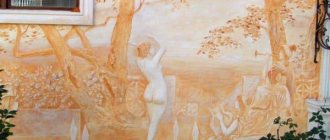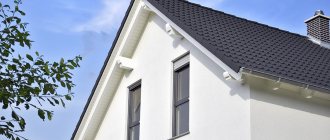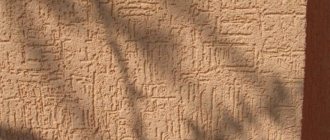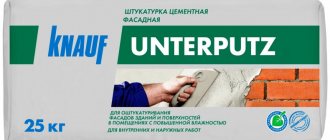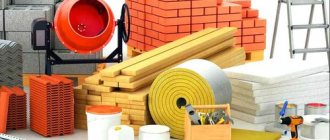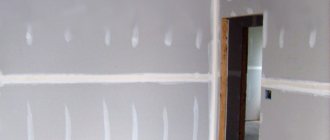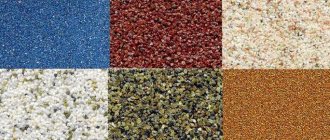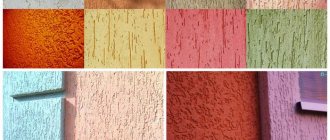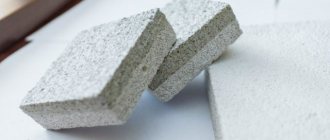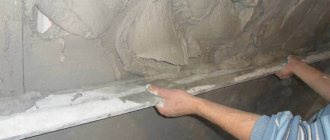The choice of plaster is a crucial moment in repair planning. The final finishing result depends on its quality. Experienced professionals prefer Ceresit plaster to many other options. The combination of the quality of the materials used and competitive prices makes Ceresit one of the best options on the modern market. Variety for different situations, disadvantages, advantages, cost of specific types of plaster and specifics of use will be discussed below.
What is decorative plaster Ceresit (Ceresit)
Decorative plaster Ceresit is a multi-layer finishing coating that allows you to give the surface a certain texture. The latter directly depends on the type of material, the tools used and the method of application.
This mixture can be used for decorative finishing of flooring, walls and building facades. With the help of appropriate dyes it can be painted in any shade.
Decorative plaster Ceresit is one of the world's leading brands. These products are presented on the Russian market.
In the countries of Eastern and Central Europe, Ceresit occupies one of the leading positions, and in Russia it is one of the three leading Western brands with local production of cement mixtures.
The decorative plaster of this manufacturer is distinguished not only by its outstanding quality, but also by a wide variety of assortments. The company produces mixtures for both interior and exterior use.
Read technologies for applying decorative plaster from Bark Beetle here.
DIY plastering technology
Do-it-yourself plastering depends on the skills of the performer, diligence and the tools used. You will need an electric concrete mixer for mixing the mortar (for small volumes, mixing can be done manually) and the selected plaster option. You will need a bucket, ladle, shovel, grater, grater, usually a level and a plumb line.
The base is moistened with water, and the protruding areas of the frozen masonry mortar are removed. An area of about a meter in area is outlined, the finished mixture is poured onto it, if possible, as evenly as possible. After this, the mixture is spread with a grater until a smooth surface is obtained. In this way, the entire surface is plastered in meter squares.
25-30 minutes after the first stage, the removal of excess begins using the rule. The rule allows you to get rid of unevenness on a fresh surface. If necessary, a second layer of plaster, called primer, is applied to a flat surface.
The final layer, called topcoat, is applied at the end of the job. Its thickness is about 2 cm, its purpose is a flat surface that can be grouted. The use of decorative layers increases the duration of work and the number of stages.
After completing the steps described above, a pause of several hours is taken. The composition hardens and becomes ready for processing with a grater. The wetted surface is rubbed with intense circular movements until the unevenness disappears completely.
Tips for choosing
Today there are many varieties and modifications of decorative plaster. The first thing you need to decide is whether to buy a dry solution or a ready-made mixture.
Dry
Dry mixtures are much cheaper. However, there is a risk of mixing the solution in the wrong proportion, which will simply ruin the coating. Dry materials are packaged in paper bags. They cannot be stored for a long time in a humid environment. Ready-made options are produced in plastic containers.
Dry plaster can be stored for a maximum of 6 months, ready-made - 2 years, and does not require any special conditions.
Drying time also varies. So dry plaster dries up to 28 days, ready-made – 7. Speaking of colors, dry plaster is often produced in white or pastel colors. To give the coating the desired shade, you need to add either a special dye or cover the surface with silicone paint. Both need to be purchased additionally. In the case of a ready-made mixture, such difficulties will not arise. Depending on the composition, decorative plasters can be divided into mineral, acrylic and silicate.
How to paint wallpaper for painting?
Mineral
Mineral ones are best suited for exterior decoration. This is the most affordable option. However, in terms of its heat and moisture-conducting properties, it is inferior to other types, moreover, it requires a more even base.
Acrylic or silicone
Acrylic and silicate mixtures are more elastic and reliable. They do not allow moisture to pass through, do not crack, and help hide minor surface defects. They can be used in any room, however, their cost is appropriate.
Facade plaster Ceresit with synthetic composition
Ceresit façade plaster may contain polymer substances.
With a synthetic composition as a base, there are such facade plasters as:
- acrylic plasters;
- polymer silicone;
- polymer silicate.
The basis of acrylic is acrylic resin. This material is not afraid of exposure to water, is durable and elastic. The main areas of application of this plaster may be areas with high rainfall.
Silicone plaster perfectly resists steam, moisture, snow, is characterized by excellent strength and lasts a long time.
Silicate facade plaster is made of silicate resins, reliably resists moisture, adheres firmly to the surface, and is protected from deformation.
Despite the fact that Ceresit facade plasters are strong and durable, they also do not last forever. To maximize the life of the plaster and the beauty of the facade of your home, it is necessary to properly care for the plaster. Experts say that it is necessary to choose the type of plaster wisely; its service life depends on this. In this case, you need to take into account the area where the house is located, the amount of precipitation there, and the amount of ultraviolet radiation.
Thus, silicone and acrylic plaster are excellent at resisting rain and snow. Humidity is somewhat terrible for mineral and silicate ones, but they tolerate sunlight well. Mineral is most suitable for low temperatures.
You also need to know some secrets that will help extend the service life of facade plaster. To protect against fungus that can invade facade plaster, it is necessary to add biologically active substances during the preparation of the plaster, which will almost completely protect against fungus. And this is not subject to discussion, but is mandatory, since there is a threat that in a very short time the facade plaster will be covered with a destructive greenish coating.
Varieties and characteristics
Today the company produces the following types of decorative plaster:
- Cerecit Decor Plus. The material is sold in the form of a dry mixture, suitable for use both inside and outside the building. It has high vapor and thermal insulation and impact resistance, and is not affected by moisture and temperatures. This plaster can be used on concrete, gypsum, cement, cement-lime, plasterboard, wood and other substrates. Depending on the method of use, the plaster can have the following textures: bark beetle (pronounced grooves), fur coat (embossed), pebble (coarse-grained). The resulting textured surface can be painted with silicone, silicate or acrylic paints.
Glass mosaic for kitchen backsplash: what is it?
- Ceresit CT 137 (mineral). This is a coarse-grained impact-resistant material. Produced in dry form, it is highly resistant to moisture, steam and temperature changes. This type of plaster has two variations - white and paintable. It can be used both inside and outside the building. It can be applied either mechanically or manually to almost any surface. It is recommended to be used for thermal insulation systems of facades with polystyrene foam and mineral wool boards. There is also a winter version of the mixture, which can be used at temperatures from 0 degrees.
- Ceresit CT 72/CT 73 (silicate). This variety is produced in the form of a ready-made solution and can be painted. This plaster has two types of texture - pebble and bark beetle. It is resistant to ultraviolet radiation, temperature changes, moisture, steam, mold and mildew, and is suitable for both interior and exterior decoration. Most often this material is used for interior decoration.
Seamless ceiling tiles: a cheap alternative to suspended ceilings.
- Ceresit CT 77 (acrylic). This type of plaster is also available in the form of an already diluted mixture. It has 48 colors and is resistant to abrasion, dirt and temperature changes. This material can be used for both design and facade work. It has a granular structure of multi-colored marble or quartz chips.
- Ceresit CT 35 (mineral). The material is produced in the form of a dry mixture and has two variations - white and paintable. The grain size also varies. The material can be used on any surfaces inside and outside the building. Can be used for thermal insulation systems. The plaster also has a winter version, suitable for use in the cold season. Available textures – bark beetle.
The use of modular sofa systems in small apartments.
- Ceresit CT 60/CT 64 (acrylic). Available in the form of a ready-made mixture. The material has pebble and bark beetle textures. This plaster is highly resistant to moisture and temperature changes, it is quite elastic and resistant to deformation, and is suitable for interior and exterior work. This material forms a durable elastic coating that can hide small cracks and surface defects, which is important for areas with high humidity. The plaster can be painted in any desired shade.
- Ceresit CT 74/CT 75 (silicone). This variety is produced in the form of a ready-made mixture, has high heat and water insulation, and is easy to clean. This material creates a durable, elastic coating that can hide small cracks and crevices. It is not susceptible to contamination and is able to maintain its original appearance for a long time. The plaster has pebble and bark beetle textures and is suitable for painting.
- Ceresit CT 175/CT 175 (silicate-silicone). Produced in the form of a ready-made mixture, it is resistant to moisture, ultraviolet radiation, temperature changes, the formation of fungi and mold, and can be used inside and outside the building. This material has pebble and bark beetle textures.
Technical characteristics of Ceresit plaster
Ceresit is a certified product; facade mixtures (for example Decor Plus) meet the required quality criteria and have the following technical characteristics:
- density - 1.7 kg per dm³;
- application temperature - from +5°С to +30°С;
- time for drying the layer before texture formation - up to 15 minutes;
- resistance to moisture (rain) - after 24 - 48 hours;
- consumption - from 2.5 kg/m² to 2.7 kg/m² (for 2 mm grain), from 3.5 to 3.8 kg/m² (for 3 mm grain).
The plaster has persistent hydrophobic properties, low water absorption, and resistance to pollution.
NOTE!
The mixture should not be frozen, but open packaging should be used as quickly as possible and stored tightly closed.
It is recommended to use the dry mixture no later than 6 months from the date of manufacture.
Specifications
Laying
The appearance of the finished surface directly depends on the method of applying decorative plaster.
Before starting to work with plaster mortar, you need to prepare the surface. Textured putty, unlike many other materials, does not require a perfectly flat surface and masks all defects well. So before applying you need:
- Clean the base from any remnants of the previous coating. There should be no oil or grease stains on it. After this, the surface should be treated with a weak soap solution and coated with a primer.
- If there are large cracks, they should be expanded and filled with a cement or gypsum-based composition. For these purposes, putty is used.
- Prime the wall again.
The base must be stronger than the textured coating.
Before directly applying the plaster, it should be tested on a small area. This allows you to determine the optimal concentration of material in the case of dry plaster mixtures. When applying the material, it is best to work with a partner. So one applies the mixture, and the second creates the desired texture. If there is no partner, then you will have to work in several stages, because... the material dries quickly and the texture should be created immediately after application. The mixture is applied to the walls using a spatula. Its optimal thickness is 2-3 mm.
The optimal thickness of coarse plaster is equal to the grain size.
Next, let's look at some of the most popular textures:
- Bark beetle To create it, you need to lay the plaster using a spatula or steel float. The surface on which the solution is applied should not exceed 1.5 square meters. m. The material must be evenly distributed over the surface. After 20 minutes, when the mixture stops sticking to the tools, you need to apply the design using a plastic or wooden trowel. The grater should move smoothly, without unnecessary effort, parallel to the floor.
- Pebble. To create such a relief, apply a small layer of solution using a trowel and let it dry. When the solution dries sufficiently, it must be treated with the same trowel. The latter must be kept parallel to the plane being decorated. The texture should be formed with jerky circular movements, without excessive pressure. All movements should be as light as possible and directed strictly clockwise or counterclockwise. The working surface should be constantly cleaned of excess mixture.
- Mosaic. To obtain a similar texture, you need to apply the material to the surface using a stainless steel grater. The grater should be held at an angle of 60 degrees. The thickness of the applied solution should not exceed 1.5 grain sizes. After 15-20 minutes, use the same grater to smooth the surface to be treated.
Preparing the mixture
To create a ready-to-use mixture, there are general indications for use. The intended surface is cleaned of dirt, large cracks, grease and various deposits. The bearing capacity of the base is checked with a hammer and removed. To prepare the mixture, use the amount of water measured according to the required volume, the recommended temperature is from +15 to +20 degrees.
The dry mixture is gradually added to the water, stirring to achieve a homogeneous mass. For mixing, it is recommended to use a drill with a special attachment or a mixer. The number of revolutions per minute is from 400 to 800. After obtaining a homogeneous mass, it is necessary to wait a technological pause of 5 minutes. A pause in the language of specialists is called maturation of the mixture.
In case of creating large volumes of the required mixture, it is strictly recommended to use forced-action concrete or mortar mixers. Application is carried out within 30 minutes after mixing. It is recommended to wash the tools used with water due to the possible hardening of the mixture. In this case, removal and cleaning of instruments is carried out mechanically.
Price
The cost of Ceresit decorative plaster can vary within the following limits (price for 1 package):
- Cerecit Dekor Plus – 380-428 rub.
- Ceresit CT 137 – 774-1000
- Ceresit CT 72/CT 73 – 3800-6000
- Ceresit CT 77 – 2800-3800 rub.
- CT 35 – 650-750 rub.
- CT 60/CT 64 – 1400-1800 rub.
- Ceresit CT 74/CT 75 – 3500-4500 rub.
- Ceresit CT 175/CT 175 – 2000-2200 rub.
You can purchase any type of solution in one of the official distributor stores - their names, addresses in the regions and opening hours are indicated on the manufacturer’s official website.
Prices and material consumption
The mixture consumption is indicated in detail for each type. It is difficult for an inexperienced repairman to navigate it, so Ceresit offers an approximate price - packaging in rubles for 25 kg. It is proposed to estimate the required volumes with specialists who, knowing the area of work, will help determine the final price and the required volume for all work.
Compared to other manufacturers, Ceresit compares favorably in cost. ST 24 costs 300 rubles per 25 kg, ST 29 – 370 rubles per 25 kg. Decorative plasters are not much more expensive, so they are popular among specialists.
Modifications will affect the price. Increased resistance to the external environment or the ability to carry out work in the cold season increases the cost of products, but allows work to be performed in any conditions.
Customer Reviews
Vladimir Kuznetsov
I used decorative plaster Ceresit CT 137 to decorate the hallway at the dacha. This was my first time working with this material. When applied, the plaster does not form into lumps and does not flow. Overall the material is decent. As for texture, creating a pattern is relatively simple. True, it still hardens a little longer than stated on the packaging.
Leonid Vengrin
I have known this brand for quite a long time. When insulating a house, Ceresit was one of the first to provide plasters for finishing. I used ST 35 mineral decorative plaster. On the website, everything was clearly described on how to prepare the mixture, apply it, and add texture. It has lasted for three years now, does not peel off, does not crack. Overall satisfied.
What formulations and dry mixtures can you purchase from us?
All brand materials can be roughly classified according to their purpose.
- For tile work.
A wide variety of products and several comprehensive solutions will help solve any problem - from preparing the base to fastening and sealing all types of cladding from moisture. Trio Protection MicroProtect technology, which is used to produce Ceresit tile adhesive, concrete contact and Ceresit grout for joints, provides protection against mold, moisture and color loss.
- For facades and finishing.
The thermal insulation system of facades guarantees the durability of the building, and Ceresit decorative plaster from our product catalog helps to realize any architectural plans. It has been proven that insulation using materials of this brand pays for itself within 3 years, annually saving more than 30% of heating costs. Facade paint can transform any building in record time! - For floor coverings.
The brand's product range includes system solutions for creating or repairing floors. These are primers, mixtures for leveling the base and repairs - for example, Ceresit self-leveling floors, fixatives and adhesives for any coating. - For waterproofing.
Civil and industrial construction successfully uses the company's developments in the field of creating rigid and elastic moisture protection. This brand can do it all - Ceresit waterproofing is good for foundations and swimming pools, and has also proven itself excellent in the construction of garages, basements and bathrooms.
- For installation and solving special problems.
Products for working with cellular concrete, all kinds of putties, materials for installation, concrete and reinforced concrete, different types of primers are indispensable for any construction.
Having chosen the development and production of materials for construction and repair as one of the leading areas of its activity, Henkel has embodied all its best developments in Ceresit mixtures.
